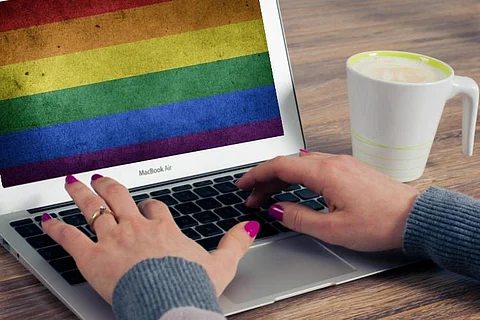

Early in my career, I witnessed a senior leader in the organisation I was working for gift a cookbook and a rose to all the female employees in his team, on women’s day. Later, I asked one of my friends what she felt about the gesture that reinforces stereotypes. She shrugged and said, “At least they remember.”
Ten years later, something similar is happening with the ubiquitous rainbow.
There is genuine interest among corporates to be inclusive when it comes to LGBTQI+ individuals. However, we run the risk of reinforcing stereotypes with uninformed and bad strategic decisions, or by making inclusion merely about symbols. There is a danger of misunderstanding inclusion as visual representation alone – and to avoid this, there are a few things that companies should keep in mind, as a first step.
The language of diversity
Firstly, companies should think deeply about the words we employ and the message we give to our employees, future employees, and communities at large.
Take ‘diversity’ for example. When we talk about diversity, it is important to realise that individuals cannot be ‘diverse’ – it’s groups that are diverse. For example, cis-heterosexual-men or able bodied men who are over represented in workplaces, could be a diverse group among themselves. So, when we talk about diversity and inclusion, it is important to not tag a person as ‘diverse’. A workplace can be diverse. A club can be diverse. A department can be diverse. But not an individual.
I have seen this happen often in hiring practices where the term “diversity candidate” is used to attract persons from underrepresented communities. This is a bad strategy and shows the lack of investment in inclusive hiring practices. Further, it does not challenge the existing exclusionary language.
It is also important to note that identities intersect, and any initiative must take into account the overlapping of identities.
Evolve the work culture
For a long term sustainable, inclusive workplace, we need to go beyond tokenistic actions and checking boxes for diversity goals. Being inclusive doesn’t stop with fixing numbers or celebrating a cultural month or day of the marginalised group. It requires us to relook at the practices that favour dominant groups.
While framing reasonable accommodation remember that the required assistance might be different for each person, and this can be achieved only if the employees are heard and involved in the process. Inclusive policy and practice doesn’t mean it works for everyone the same way, rather it must have room for diverse needs and adapt over time. In simpler terms, one solution does not fit all. Leave behind the cookie cutter approach for inclusion initiatives. This also includes accommodation for employees who are caregivers for their spouse or adult dependents, who might be a person with a disability.
Inclusion is beyond cultural symbols
Symbols play an important role in visual representation. They highlight the group we are talking about and set the context. They are also a way to visibly show commitment to the inclusion journey.
As corporate India gears up to include LGBTQI+ persons in the workplace, we see the rainbow splashed everywhere. The rainbow flag represents the LGBTQIA+ community. It was first introduced in 1978 and has undergone various revisions to represent intersectional identities.
In June 2015, Facebook introduced a tool to superimpose a rainbow on users’ profile pictures – popularly known as the rainbow filter. This feature went viral and also let people show their allyship or identify themseleves as queer. The visually appealing rainbow filter went viral and sometimes was used by people who did not understand the underlying meaning of it. A similar incident that comes to my mind was when an organisation distributed rainbow lanyards during the launch of their LGBTQ+ employee affinity group. Employees eagerly took the colourful lanyards – only to return them when they realised what it meant.
Representation alone doesn’t give the full picture
One of the strategic goals for organisations is to increase employee diversity percentages. Ideally, the branding and PR initiatives are to position the organisation as a preferred employer in the market. Some organisations implement equitable practices to attract and retain underrepresented communities and also to create leadership pipelines within the organisation.
In most cases, the long-term goal is to make a fair representation of underrepresented communities which would help the organisation grow. While numbers can show the increase in the workforce diversity, it is important to gauge the experiences of the diverse workforce within the organisation. A noticeable difference in the experience of employees from various identity groups might mean one group is favoured more than the other. In this case, the number might indicate diversity but not inclusion.
One of the ways to find if the experience of all the employees is the same is to have methods that capture limitations that employees face within the organisation. This would also help in improving the practices and mitigate any associated bias for exclusionary experiences.
Your work will speak for itself
To promote an organisation as the choice of employer to the desired target group is key in employer branding. On the other hand, communities also keep a watch on organisations. While this might not be visible, marginalised communities, which are close knitted, keep track on organisations and how the existing employees from the community are treated in the organisation through the whisper network. Public relations initiatives are only supplementary to the inclusion efforts and won’t help in the long term if there isn't a change in the practices within the organisation.
Moulee is the co-founder of Queer Chennai Chronicles. He is a workplace Diversity, Equity and Inclusion professional and is based in Chennai.
Views expressed are the author’s own.